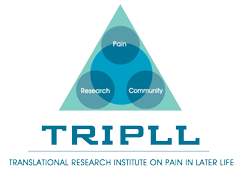Secondary Analyses of Resilience, Positive Emotions, and Pain in the General Population
Principal Investigator: A Ong (Human Development)
It is estimated that chronic pain afflicts between 50 and 80 million people in the United States alone, with an increased prevalence among the elderly. In addition to the emotional suffering that accompanies the pain experience, chronic pain presents enormous costs to society and remains a major health care problem for the elderly in the United States. The question of how older adults successfully adapt to chronic pain is, thus, a pressing concern for social scientists, educators, and policy-makers alike. Although research on chronic pain in older adults has increased in recent years, the field still suffers from three weaknesses that compromise our understanding of the process by which positive adaptation to pain develops in older populations: (1) a limited number of systematic, detailed analyses of older adults’ daily lives as they encounter the demands of adapting to pain experiences; (2) a relative dearth of research on biological mechanisms and vulnerability factors, and (3) little empirical attention to the role of resilience resources that may aid in daily adaptation to chronic pain. The current project addresses these weaknesses by utilizing a combination of innovative methodological (daily diary) and statistical approaches (multilevel growth curve analyses) to determine how the daily experiences of older adults with chronic pain, as well as their physiological reactions to those experiences, are associated with positive adaptation over time.
